The category of laxatives includes both over-the-counter and prescription medications that are most commonly used to alleviate constipation. When used as directed to treat a legitimate medical concern, laxatives can be safe and beneficial.
Unfortunately, many people also abuse laxatives, often in an attempt to lose weight or prevent weight gain. As Cornell Health has reported, this type of laxative use can be extremely dangerous. Laxative abuse can even lead to laxative addiction.
Timberline Knolls Residential Treatment Center can help women and girls who have become trapped in the cycle of laxative use, abuse, and addiction. Our individualized laxative addiction treatment services can help you regain control of your behaviors and address any underlying concerns that may have caused you to engage in laxative use.
Common Signs & Symptoms of Laxative Addiction
Women or girls who exhibit the following signs may be struggling with laxative use or laxative addiction:
- Habitually going to the restroom immediately after eating
- Making negative comments about herself or others regarding weight or body size
- Lying about how much or how often she eats
- Wearing oversized clothing (to hide weight loss)
- Frequently shivering, shaking, or complaining of being cold
- Pulling away from family and friends
- Weighing herself excessively
Laxative addiction can also cause women and girls to experience the following symptoms:
- Abdominal cramps and stomach pains
- Constipation and diarrhea
- Halitosis (bad breath)
- Dizziness and poor coordination
- Muscle weakness
- Blood in stool
Laxative Use Statistics
As these statistics indicate, laxative use is prevalent in the United States. These laxative use statistics also demonstrate that this behavior is common among people who have certain eating disorders:
- According to the consumer data reporting company Statista, from 2015-2018, annual revenue from over-the-counter laxative sales exceeded $1.3 billion each year.
- A study in the March 2000 edition of the Journal of the American Academy of Child & Adolescent Psychiatry found that as many as 32% of adolescents who had anorexia used laxatives as a weight-control measure.
- A 2006 report on the website of the University of California San Diego noted that the rate of laxative use among individuals who have anorexia and bulimia may be as high as 70%.
Effects of Laxative Addiction
Untreated laxative addiction puts you at risk for many negative effects, including damage to your physical, mental, and social well-being.
The physical effects of laxative abuse can include:
- Dehydration
- Electrolyte imbalance
- Liver and kidney damage
- Heart problems, including increased risk of a heart attack
- Impaired functioning of the intestine
- Urinary tract infections
- Increased risk of developing colon cancer
Socially and emotionally, untreated laxative addiction can lead to:
- Setbacks at work or in school
- Ruined relationships with family members and friends
- Social isolation
- Onset or worsening of mental health concerns
- Overwhelming sense of hopelessness or helplessness
- Thoughts of self-harm or suicide
Treatment for laxative use can help you avoid these negative outcomes. While you’re in our laxative addiction treatment center, you can also begin to heal from any harm you’ve already experienced.
How to Choose a Laxative Addiction Treatment Center
When you’re trying to choose the ideal laxative addiction treatment center, it’s important to learn about details such as what levels of care the center offers, what types of treatment you’ll receive, and who will be providing treatment.
Timberline Knolls Residential Treatment Center features two levels of laxative addiction treatment. Our residential program offers laxative addiction treatment for adolescent girls ages 12-17 and adult women age 18 and older. Our partial hospitalization program, or PHP, serves adult women.
Each level of laxative addiction treatment features a variety of research-based, evidence–supported treatment activities. Our programming includes types of treatment that have a documented history of helping other women and girls whose lives were impacted by improper laxative use.
At both levels, laxative addiction treatment is provided by multidisciplinary teams of professionals. Depending on your needs, you may work with doctors, nurses, several types of therapists, counselors, dietitians, nutritionists, and other experts.
If your experiences with laxative use are symptoms of an eating disorder, or if you have developed a co-occurring mental health condition, we offer the comprehensive services that will address all your needs.
A member of our team can explain the features and benefits of laxative use treatment at Timberline Knolls Residential Treatment Center so that you’ll be prepared to make the most informed decision.
Types of Therapy to Treat Laxative Addiction
If you’ve been struggling with laxative use, you deserve individualized treatment that addresses the specific ways you have been impacted and prepares you to achieve your unique immediate and long-term goals.
At Timberline Knolls Residential Treatment Center, you will complete a thorough assessment so that your laxative addiction treatment team is aware of the full scope of your needs. Your team will use that information to create your individualized laxative addiction treatment plan.
Depending on several personal factors, your care at our laxative addiction treatment center may include elements such as:
- Dialectical behavior therapy (DBT)
- Acceptance and commitment therapy (ACT)
- Cognitive behavioral therapy (CBT)
- Individual, group, and family sessions
- Experiential therapies
- Motivational interviewing
- 12-Step education and support
When you’re ready to transition out of our laxative addiction treatment center, you’ll receive a detailed, individualized discharge plan. This plan will connect you with the professional resources and community-based services that will support your continued progress. When you complete laxative addiction treatment at Timberline Knolls Residential Treatment Center, you also become a member of our national alumnae community.
The skills you develop while receiving laxative addiction treatment, the information in your discharge plan, and your connection with our alumnae program are designed to help you make sustained progress toward improved health. They can also help you if you have a setback in your recovery from laxative addiction.
The day you choose Timberline Knolls Residential Treatment Center, you take an important step on your path to recovery from laxative addiction.
This content was reviewed and approved by the clinical staff at Timberline Knolls Residential Treatment Center.







